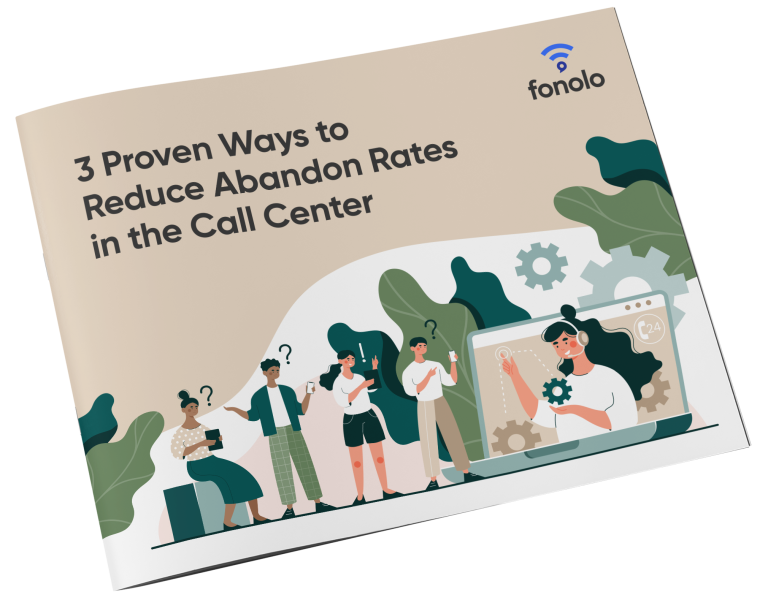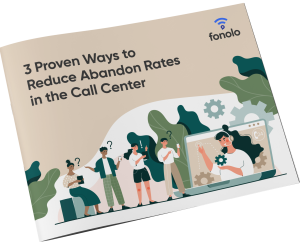 The impact of AI on the call center is a red hot topic these days. Unfortunately, a TON of the writing out there is not helpful and sometimes even misleading. I’m not just talking about sloppy blogs, either. Some of the worst offenders are top publications. (I’m going to take the high road and not link to any here.)
The impact of AI on the call center is a red hot topic these days. Unfortunately, a TON of the writing out there is not helpful and sometimes even misleading. I’m not just talking about sloppy blogs, either. Some of the worst offenders are top publications. (I’m going to take the high road and not link to any here.)
A big part of the problem is the confusing interplay between the “AI”, “chat”, and “bot” topics. All three rose to prominence – each for separate, valid reasons – contemporaneously and all three suffer from imprecise definitions. Adding to the confusion, are companies putting out vague marketing and product announcements that are sometimes a tossed salad of buzz words.
All this gets thrown into the cognitive meat grinder and what comes out is something like: “Soon Call Centers Won’t Need Agents!” Clearly there’s a lot of messy thinking, but it can be hard to figure out where the break-down is happening. I will share with you two guiding principles that help me cut through the noise. Hopefully you find them helpful too.
Containment vs. Coverage
Starting from first principles: Every company has a set of customer-facing transactions, a fraction of them are “self-servable”. That fraction is growing, but there are constraints that keep it from 100%. (See Will We Always Need Call Centers?) We can call this the self-service “coverage”. Transactions outside this coverage require a human.
The “self-servable” transactions can be made available via one or more self-serve channels: Web form, IVR, email, chat, etc. Each transaction has a “success rate”, aka “containment rate”, that is some number less than 100%. The non-contained transactions also need a human.
So humans are needed for transactions in two situations:
- The transaction is not possible via self-service; or
- The self-serve process failed
In other words, if you want to reduce the number of human interactions, you have to increase coverage (i.e. take humans out of processes that previously needed them), OR increase containment (i.e. make self-serve processes more likely to succeed).
GUIDING PRINCIPLE #1: If someone says AI will replace customer service agents you must ask: Is that due to an increase in self-serve coverage or containment?
THOSE ARE THE ONLY TWO MECHANISMS.
If you can’t answer that question, stop right there.
Generally, increasing coverage is the harder problem. Ask yourself, Why is this transaction not currently a candidate for self-serve? Given the huge cost savings of self-serve, most of the “low hanging fruit” has already been converted to self-serve. The transactions that are left may be too complicated, too nuanced, or too sensitive to be good candidates. AI isn’t likely to help here.
Another situation is there may be a “long-tail” of transactions where each is too rare to merit the effort to make it self-servable. AI isn’t likely to help here either.
AI is more likely to help on the other front: increasing the containment rate of existing self-serve transactions. It can do this by funneling loosely-phrased questions into established procedures, or by preemptively filling in information, or by skipping unnecessary steps in a transaction.
However, true success stories are rare so far. Today what companies and vendors report, if they report anything quantitative AT ALL, is how many conversations or interactions their AI system is processing. What I’m looking for is a company to say, “AI increased the containment rate of our flight-booking process by 10%”. Until we see data like that, it’s still the pre-game show. (See Bots Haven’t Truly Arrived Until We See Containment Stats.)
AI Improvements are Venue Agnostic
Whatever improvement AI brings, it can generally be applied to any self-serve venue. If you’ve developed a way to interpret, say, plain English requests for an airline ticket into actionable purchase (a very hard problem, by the way), there’s no reason you would apply this in your chat system and not make it available via your voice-interface too. The evolution of self-serve channels is unrelated to what’s going on with AI.
GUIDING PRINCIPLE #2: Don’t confuse discussions about AI with discussions about self-service channels.
Both are interesting but ORTHOGONAL to each other.
That doesn’t mean that self-service channels aren’t fascinating. Quite the contrary! There are technology angles, e.g. vastly improved voice recognition. There are sociological angles, e.g. millions of people welcoming an always-listening device like Echo into their homes. There’s the clash-of-the-titans angle, e.g. Siri vs. Alexa vs. Cortana. There’s the generational angle: young’uns prefer text-based chat to phone calls. And more… all fascinating stuff!
But, again, the venue on which the self-serve happens is separate from whether, and how-much, AI can make that self-serve better. When you’re reading an article ask yourself, Is this really about AI or the venue?

3 Proven Ways to Reduce Abandonment Rates in Your Call Center
Reducing your abandon rates has been proven to lower costs, improve customer satisfaction and deliver a better call center experience.
